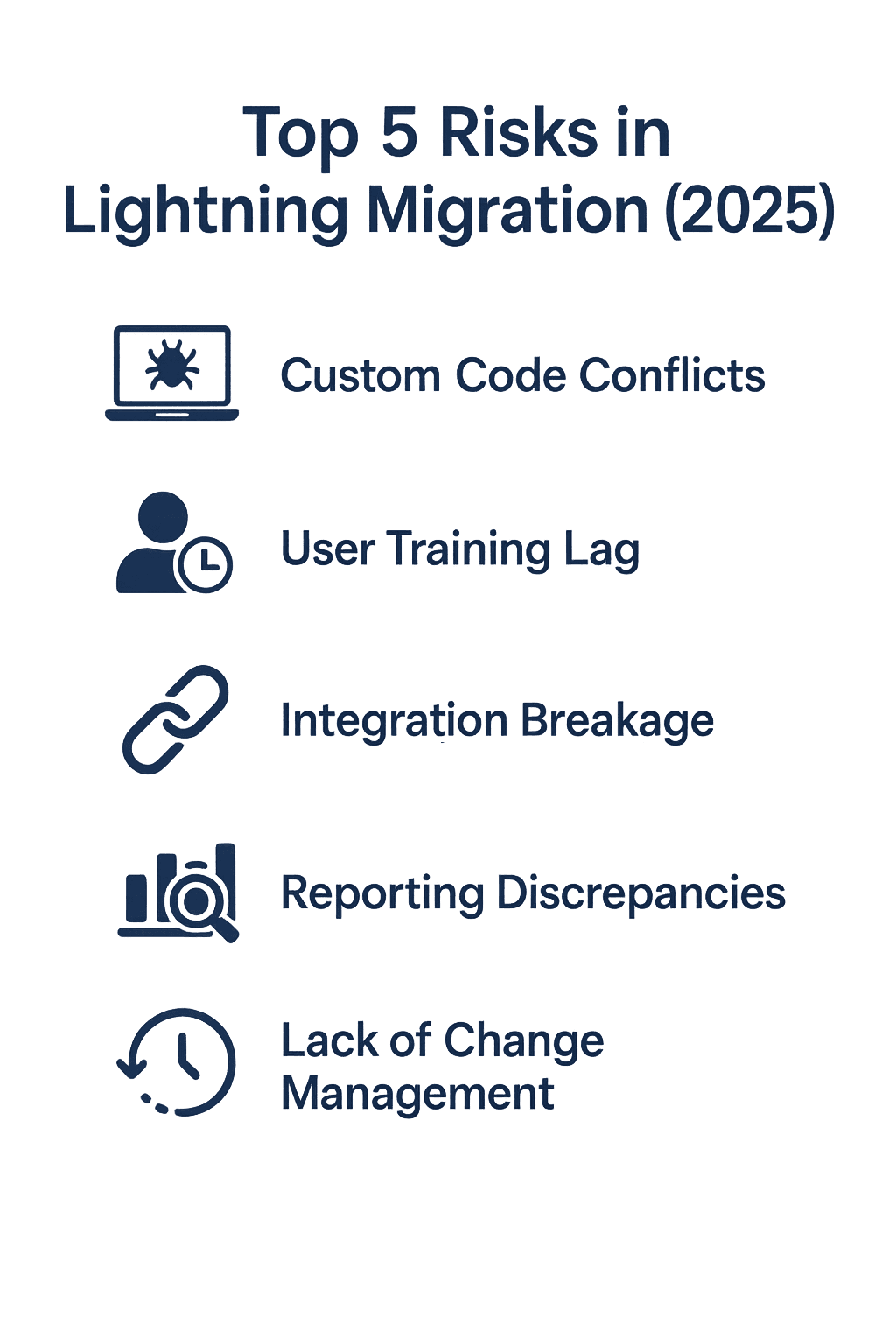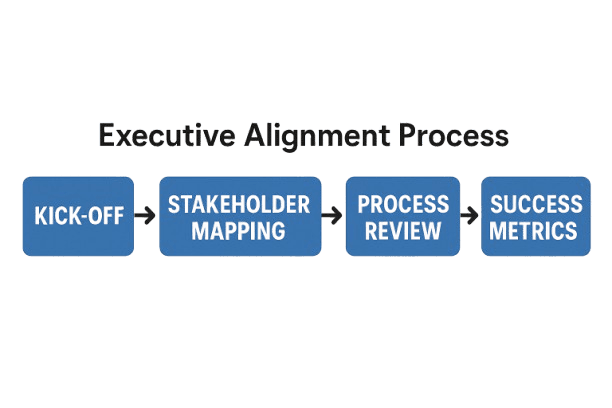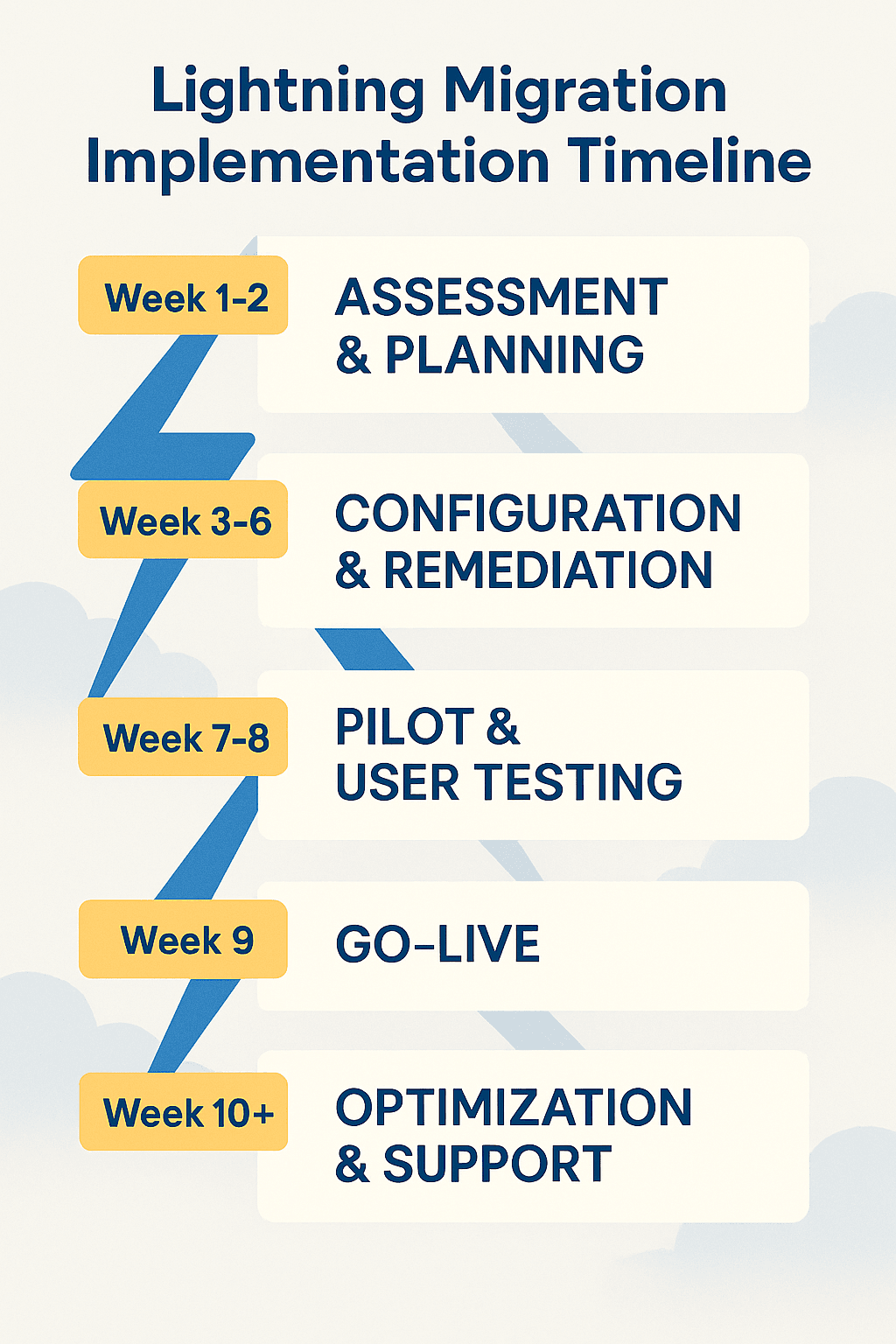Salesforce Lightning Migration Best Practices for 2025: Ensuring a Smooth Transition
July 28
Salesforce
Blog

The transition to Salesforce Lightning Experience has become a strategic imperative for organizations invested in customer relationship management and digital transformation. As we step into 2025, migration is less about simple UI evolution and more about business reinvention. For Salesforce administrators, CRM consultants, IT leaders, and business decision-makers, understanding and mastering the complexities of this migration can mean the difference between a competitive leap forward and a costly misstep.
Why Lightning Migration Is More Than a UI Upgrade
Salesforce Lightning Experience offers a reimagined platform designed to power modern workflows, improved productivity, and next-level automation. The migration is not just cosmetic; it fundamentally changes how users interact with data, customize interfaces, and drive business outcomes. However, realizing these benefits requires both a strategic plan and a meticulous approach especially when aligning IT with business goals and current tech investments.
Common Migration Challenges in 2025
- Legacy Customizations: Existing Visualforce pages, Apex code, and third-party integrations not optimized for Lightning can lead to functionality gaps.
- User Adoption: Without robust training and communication, users may struggle to embrace Lightning’s new workflows, leading to productivity dips.
- Data Integrity: Incomplete data migration or misconfigured permissions can disrupt operations and decision-making.
- Resource Constraints: Many IT leaders are stretched thin making it difficult to dedicate the necessary expertise for a seamless transition.
As highlighted by Forbes, many organizations underestimate the volume of cleansing required, especially when merging records from multiple legacy systems. Oversights in validation and mapping logic can cause long‑term trust issues in your CRM data.

Strategic Solutions: Our Salesforce Lightning Migration Blueprint
At OMI, we have distilled Lightning migration into a set of best practices tailored for organizations navigating complex digital landscapes.
1. Executive Alignment and Business Impact Assessment
- Stakeholder Workshops: Involve business, IT, and operations leaders from the start. Identify high-priority processes and pain points that Lightning can address.
- ROI Analysis: Quantify expected performance improvements (e.g., faster workflows, improved reporting) to establish a baseline for post-migration success.

2. Comprehensive Org Readiness Assessment
- Lightning Readiness Check: Audit all custom code, workflows, and integrations with Salesforce’s Lightning Experience Readiness tools to uncover blockers early.
- Gap Analysis: Document functionality that will be impacted, prioritizing mission-critical customizations for remediation.
3. Iterative Prototyping and User Experience Design
- Sandbox Pilots: Build Lightning prototypes in a sandbox environment, enlisting power users to validate process improvements and surface usability issues.
- UI Personalization: Leverage App Builder and Dynamic Forms to streamline layouts for diverse user groups (sales, support, marketing, etc.).
4. Data Preparation and Quality Control
- Clean Data: Review and cleanse existing datasets, removing duplicates and ensuring field mappings align with Lightning architectures.
- Security Review: Revalidate user permissions, role hierarchies, and sharing rules to safeguard sensitive data in the new UI.
5. User Training, Change Management & Communication
- Role-Based Training: Develop tailored enablement materials for each major user segment, leveraging scenario-based learning.
- Feedback Loops: Set up channels (e.g., surveys, in-app prompts) to capture user feedback and refine deployment plans.
In line with our approach, Salesforce First outlines a detailed 10‑step migration roadmap from readiness checks to phased rollout and continuous optimization, reinforcing the importance of structured planning and thorough testing.
Implementation Steps: Salesforce Lightning Migration Playbook
- Project Launch: Confirm goals, define team roles, and agree on KPIs.
- Technical Due Diligence: Catalog objects, automations, and custom components.
- Remediation Sprints: Update or refactor non-Lightning-compatible assets (e.g., Visualforce pages, buttons, and workflows).
- Pilot Migration: Transition a controlled user group and resolve edge-case issues.
- Data Migration Validation: Conduct parallel runs to check for data loss or reporting inconsistencies.
- Enablement & Adoption Campaign: Launch tailored training, support resources, and internal documentation hubs.
- Full-Scale Rollout: Stagger the rollout across departments, monitor adoption, and address incidents rapidly.
- Continuous Optimization: Solicit user input and iterate on new enhancements or dashboard improvements.

Key Considerations for 2025 and Beyond
- AI Readiness: With AI deeply integrated into Lightning (from Einstein AI to workflow automation), now is the time to assess how enhanced analytics and predictive features can transform your customer engagement strategies. For insights on the future of AI in business, see resources from Harvard Business Review and McKinsey's AI insights.
- Governance: As new Lightning features keep rolling out, establish a center of excellence or governance model to manage updates, compliance, and innovation cycles.
- Integrations: Check compatibility of all connected apps especially if leveraging solutions like Microsoft Dynamics, Flowgear, or other APIs that drive workflows in your ecosystem.
- Managed Services: Consider leveraging managed service providers for ongoing performance monitoring, admin support, enablement, and optimization to sustain your ROI.
Summary: Building Lasting Value Through Salesforce Lightning
Salesforce Lightning Migration is a transformational journey and one that, done right, can unlock enormous value for your organization in 2025 and beyond. The keys to success are clear vision, meticulous planning, user-centric design, robust change management, and continuous optimization. As CRM consultants with more than two decades of experience, our team at OMI is dedicated to ensuring every aspect of your migration aligns with business strategy, enhances user adoption, and delivers measurable returns on your Salesforce investment.
Ready to explore how a Lightning migration can transform your business, or want expert guidance tailored to your unique environment? Connect with OMI for a complimentary consultation and let us help you write your next CRM success story.